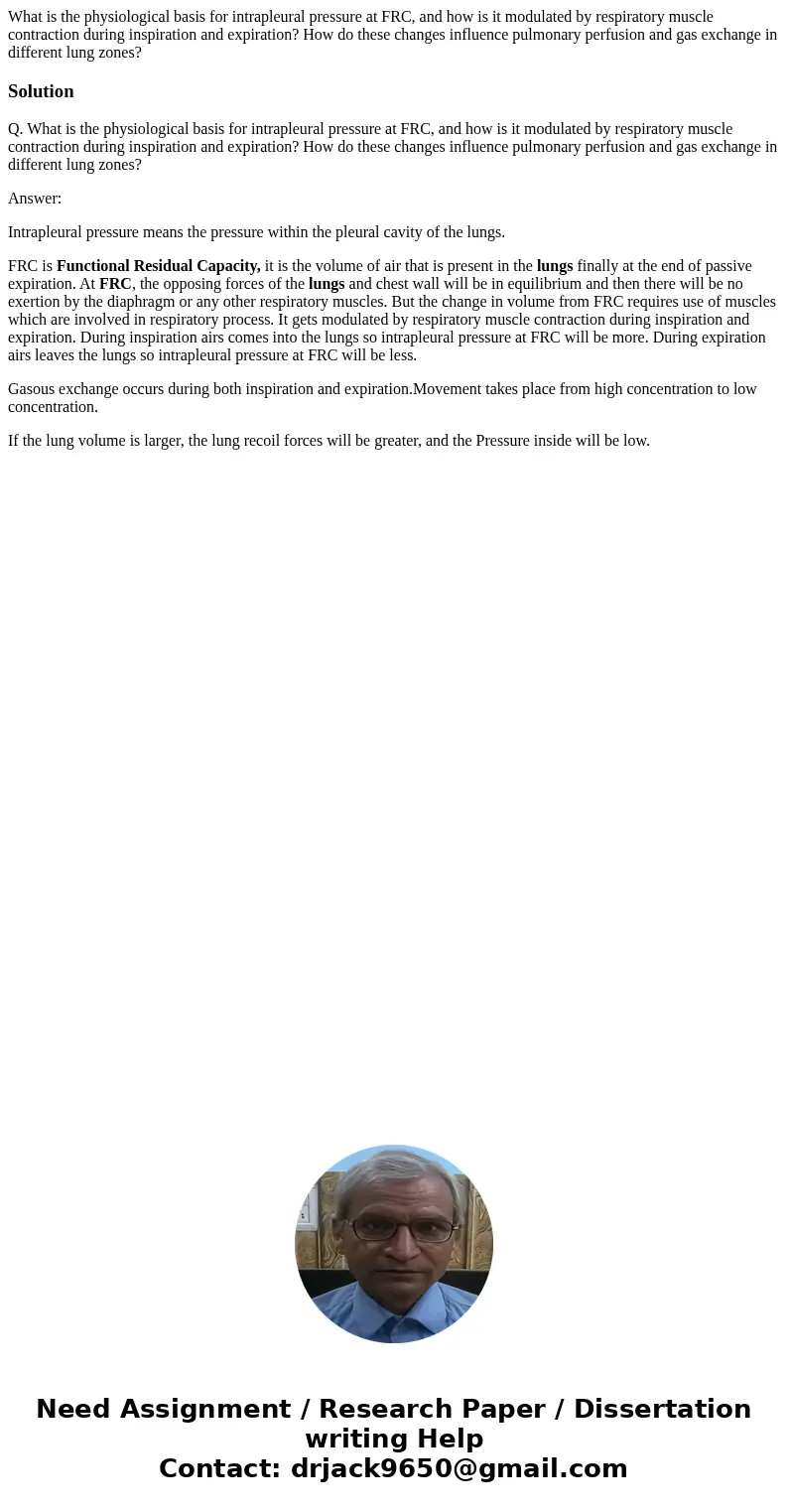What is the physiological basis for intrapleural pressure at
What is the physiological basis for intrapleural pressure at FRC, and how is it modulated by respiratory muscle contraction during inspiration and expiration? How do these changes influence pulmonary perfusion and gas exchange in different lung zones?
Solution
Q. What is the physiological basis for intrapleural pressure at FRC, and how is it modulated by respiratory muscle contraction during inspiration and expiration? How do these changes influence pulmonary perfusion and gas exchange in different lung zones?
Answer:
Intrapleural pressure means the pressure within the pleural cavity of the lungs.
FRC is Functional Residual Capacity, it is the volume of air that is present in the lungs finally at the end of passive expiration. At FRC, the opposing forces of the lungs and chest wall will be in equilibrium and then there will be no exertion by the diaphragm or any other respiratory muscles. But the change in volume from FRC requires use of muscles which are involved in respiratory process. It gets modulated by respiratory muscle contraction during inspiration and expiration. During inspiration airs comes into the lungs so intrapleural pressure at FRC will be more. During expiration airs leaves the lungs so intrapleural pressure at FRC will be less.
Gasous exchange occurs during both inspiration and expiration.Movement takes place from high concentration to low concentration.
If the lung volume is larger, the lung recoil forces will be greater, and the Pressure inside will be low.

 Homework Sourse
Homework Sourse